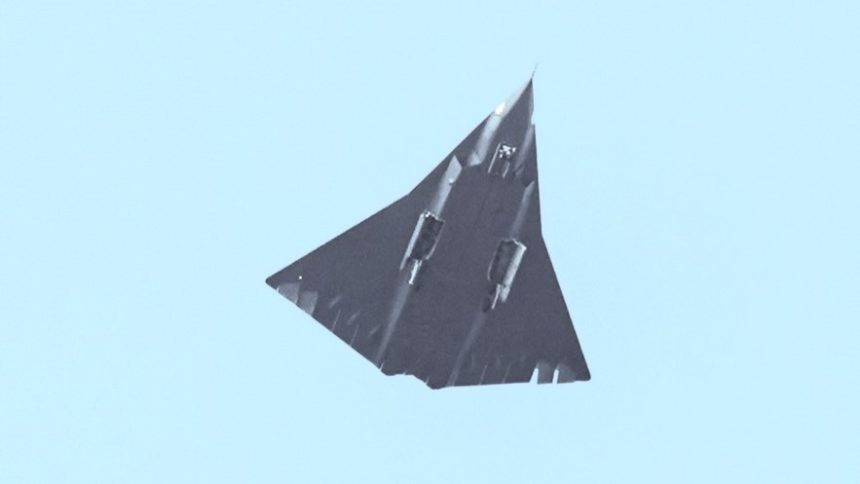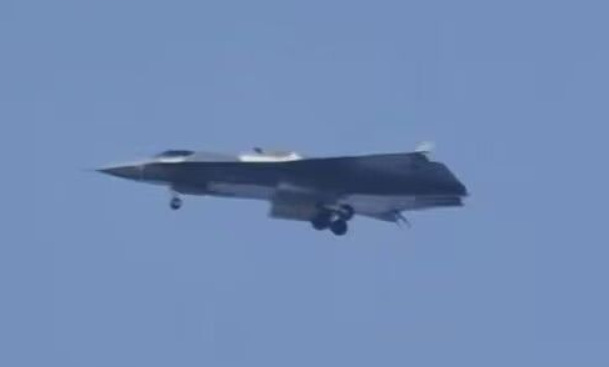Analysis of China's new three-engine double-delta stealth warplane
Former British aircraft technical liaison to Washington gives first thoughts
Video of a new Chinese aircraft of novel configuration has caused a stir. We asked Jim Smith, former British aircraft technical liaison to Washington, his thoughts.
The size is consistent with a multi-role aircraft with potential for strategic air defence and strike roles. The configuration is clearly aimed at low signature, particularly the absence of a tailfin, and the use of B-2-like split ailerons for roll, yaw, and (possibly) airbrake functions. The hint of VSTOL (elsewhere) is utterly unlikely, given the absence of nozzles, the impact on internal volume, and the probability of major suckdown issues on landing. The three intake configuration is interesting and novel. There are two clear intakes below wing, with rear nozzles exhausting over the upper surface at the rear of the wing. Then there is the upper fuselage intake.
The cutaway model seen in some images appears to feature some sort of turbine engine, and the aircraft does appear to have a third central nozzle, so this does appear to be a 3rd engine of some sort. It is far from clear, however, whether the model is closely representative of the flying aircraft. The same model appears to suggest long internal weapons bays outside of the intakes. The very long-chord of the wing in this area would provide adequate volume for this, but the central and forward fuselage would appear to offer more space, perhaps for air to surface or other weapons. What could be the mission? The size suggests a design with significant fuel and payload, potential for supersonic cruise, and potentially all-aspect reduced signature.
The long weapons bays could be used for long-range (and possibly high-speed) AAMs, and there is potential for carriage of air to surface stores or stand-off weapons, if additional weapons bays are available.
There's a lot one could do with such an aircraft, particularly in concert with the J-20 fighter. Area Denial of the South China Sea would be an obvious role, as would the strategic air defence of the Chinese mainland. It could also offer a stand-off capability against naval targets. I suggest these strategic roles for the aircraft because it looks more suited to Beyond-Visual-Range combat and strike against difficult targets, than manoeuvring air combat. There are still lots of questions to be addressed, and all of the above is guesswork based on very limited images. The upper intake location is a puzzle, as it looks challenging for use in aggressive manoeuvring flight.
I did wonder if the third engine provides an auxiliary function, such as air for a circulation control system, and perhaps for IR signature reduction. The weight and volume penalty would be significant, however, so propulsion is the most likely option, particularly since the exhaust arrangement looks similar for all three engines.
Hush-Kit wonders if this shape is informed by snooping of the next US fighter…


